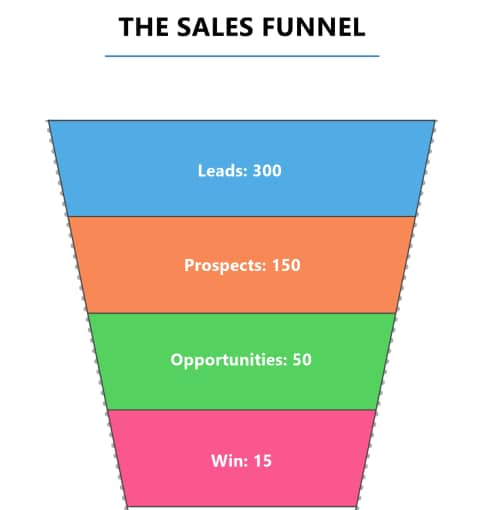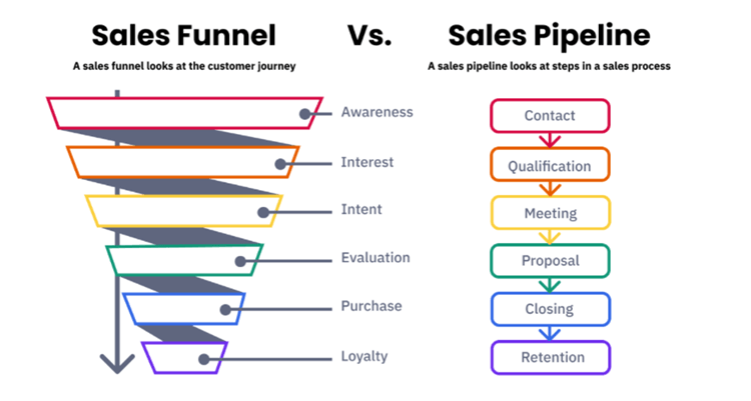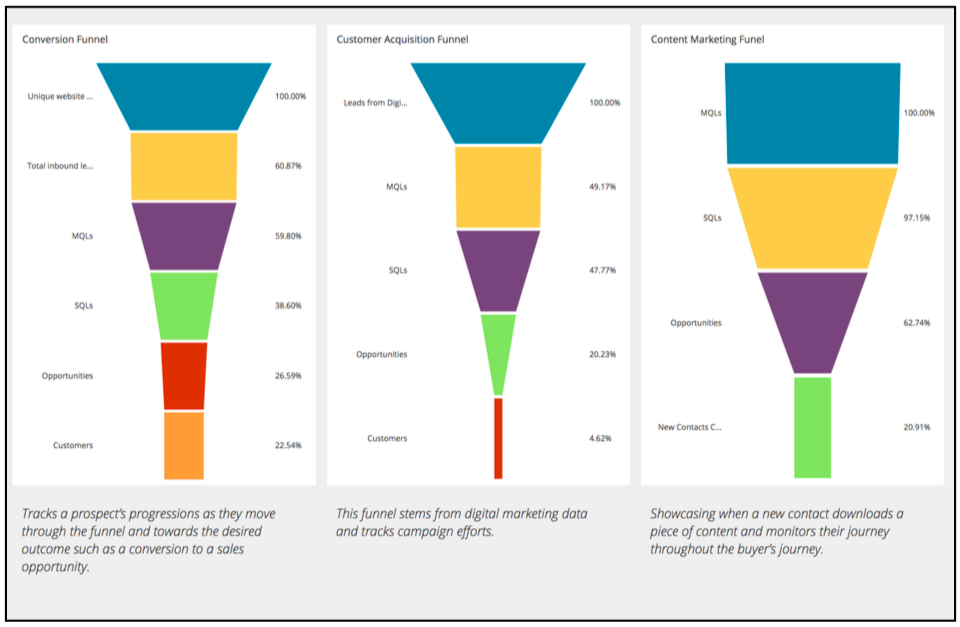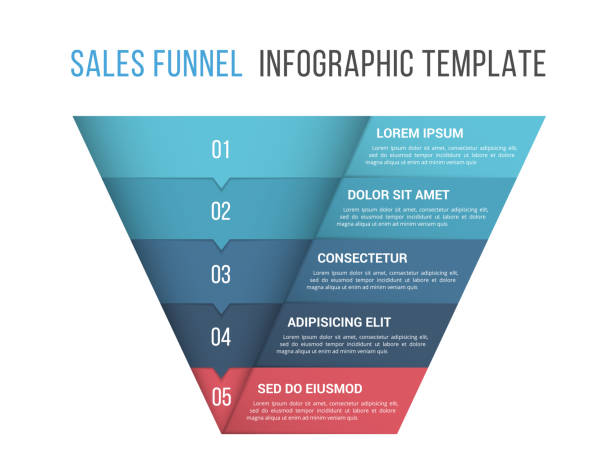From Chaos to Clarity: Mastering Funnel Infographics for Visual Storytelling
Transform Your Data into Compelling Visual Narratives That Drive Action
In my journey through data visualization, I've discovered that funnel infographics are more than just pretty charts—they're powerful storytelling tools that transform complex processes into clear, actionable insights. Let me share how you can master this essential visual communication technique.
The Power of Visual Funnels
I've witnessed firsthand how funnel infographics transform abstract business metrics into compelling visual stories. Unlike traditional spreadsheets or basic charts, funnels create an immediate understanding of progressive processes—showing not just what happens, but how and why conversions occur at each stage.

The psychology behind funnel visualization taps into our natural understanding of flow and progression. When I present data through funnels, stakeholders instantly grasp where opportunities lie and where bottlenecks occur. This visual metaphor bridges the gap between complex analytics and actionable insights.
What makes funnels particularly powerful is their ability to tell a story. Each stage represents a chapter in your customer's journey, and the narrowing shape naturally communicates the reality of conversion rates. By connecting these abstract metrics to tangible visual narratives, we create understanding that drives better decision-making.
Pro Tip: When designing funnel infographics, I always start by understanding the story I want to tell. The data supports the narrative, not the other way around. This approach ensures that my visuals resonate with audiences and drive action.
Anatomy of Effective Funnel Infographics
Creating effective funnel infographics requires understanding their core components. I've learned that successful funnels balance three essential elements: clear stage definitions, accurate percentage representations, and intuitive flow indicators. Each component must work in harmony to create a cohesive visual narrative.
Funnel Structure Components
Here's how I visualize the essential elements of a funnel infographic:
flowchart TD
A["Awareness Stage
100% of Audience"] --> B["Interest Stage
70% Engaged"]
B --> C["Consideration
40% Evaluating"]
C --> D["Intent
20% Ready"]
D --> E["Purchase
5% Convert"]
style A fill:#FF8000,stroke:#333,stroke-width:2px,color:#fff
style B fill:#FF9933,stroke:#333,stroke-width:2px,color:#fff
style C fill:#FFB366,stroke:#333,stroke-width:2px,color:#fff
style D fill:#FFCC99,stroke:#333,stroke-width:2px,color:#fff
style E fill:#FFE6CC,stroke:#333,stroke-width:2px
Types and Applications
Through my experience, I've identified four primary funnel applications that drive business success. Sales funnels track the journey from awareness to conversion, revealing where prospects drop off. Marketing funnels map the entire customer journey, helping us optimize touchpoints. Recruitment funnels streamline talent acquisition by visualizing candidate progression, while process optimization funnels identify operational bottlenecks.
Sales Funnels
Track conversion from lead to customer, identifying drop-off points and optimization opportunities.
Marketing Funnels
Map customer journeys across touchpoints, measuring engagement at each stage.
Recruitment Funnels
Visualize candidate progression from application to hire, optimizing the talent pipeline.
Process Funnels
Identify operational bottlenecks and inefficiencies in business workflows.
Best Practices from Industry Leaders
After analyzing numerous successful funnel designs, I've discovered patterns that separate exceptional visualizations from mediocre ones. The best funnels maintain visual hierarchy through strategic color use, employ consistent spacing between stages, and integrate data visualization charts seamlessly to provide context without overwhelming the viewer.

Creating Funnels That Convert Ideas into Action
My methodology for funnel construction has evolved through countless iterations and client feedback. I begin by clearly defining the process stages, ensuring each represents a meaningful transition point. Then I gather accurate data for each stage, remembering that precision builds trust with stakeholders.
Typical Conversion Rates by Stage
Here's what I typically observe across different funnel stages:
Data Integration Strategies
Transforming raw metrics into compelling visual stories requires strategic thinking. I focus on highlighting the most impactful data points while maintaining context. By connecting funnel stages with supporting infographic data visualizations, I create comprehensive narratives that resonate with diverse audiences.
One technique I've found particularly effective is using PageOn.ai's Vibe Creation feature to generate context-appropriate visual elements. This ensures consistency across all funnel components while maintaining the flexibility to adapt to specific brand requirements.
Customization and Brand Alignment
While templates provide excellent starting points, I always customize funnels to align with brand identity. This involves adapting color schemes to match brand guidelines, adjusting typography for consistency, and incorporating brand-specific icons or imagery. The goal is creating funnels that feel native to the organization's visual language.
Design Insight: I maintain a library of reusable funnel frameworks that can be quickly adapted for different projects. This approach ensures consistency while dramatically reducing creation time.
Advanced Funnel Visualization Techniques
As I've pushed the boundaries of funnel visualization, I've developed techniques that go beyond basic representations. Multi-dimensional funnels allow me to show parallel processes simultaneously, revealing interconnections that single funnels miss. Interactive elements and hover states provide deeper insights without cluttering the initial view.
Multi-Channel Funnel Integration
Visualizing how different channels contribute to conversion:
flowchart LR
subgraph "Organic"
A1[Search] --> B1[Landing]
B1 --> C1[Engage]
end
subgraph "Paid"
A2[Ads] --> B2[Landing]
B2 --> C2[Engage]
end
subgraph "Social"
A3[Posts] --> B3[Landing]
B3 --> C3[Engage]
end
C1 --> D[Consideration]
C2 --> D
C3 --> D
D --> E[Conversion]
style D fill:#FF8000,stroke:#333,stroke-width:2px,color:#fff
style E fill:#66BB6A,stroke:#333,stroke-width:2px,color:#fff
Combining funnels with other visualization methods creates powerful hybrid displays. I often integrate flowchart examples to show decision points within funnel stages, providing a more complete picture of the customer journey.
Industry-Specific Applications
E-commerce Conversion Optimization
In e-commerce, I track micro-conversions at each stage: product views, add-to-cart rates, checkout initiation, and purchase completion. This granular approach reveals specific friction points that impact revenue.
B2B Lead Generation
For B2B contexts, I extend funnels to include post-purchase stages like onboarding and expansion. This comprehensive view helps teams understand the full customer lifecycle value.
Content Marketing Performance
Content funnels track engagement from awareness through to conversion, showing how different content types perform at each stage of the buyer's journey.
Measuring Funnel Effectiveness
I evaluate funnel performance through multiple lenses. Conversion rates between stages reveal efficiency, while velocity metrics show how quickly users progress. Equally important is gathering qualitative feedback from stakeholders to ensure the visualization meets their decision-making needs.

Tools and Technologies for Funnel Creation
Throughout my journey with funnel visualization, I've experimented with numerous tools. While PowerPoint remains surprisingly capable for basic funnels, specialized design platforms offer advanced features that elevate the final product. The key is choosing tools that match your technical skills and output requirements.
| Tool | Best For | Key Features | Learning Curve |
|---|---|---|---|
| PowerPoint | Quick presentations | Templates, SmartArt | Low |
| Adobe Illustrator | Custom designs | Full control, vectors | High |
| Canva | Quick graphics | Templates, drag-drop | Low |
| PageOn.ai | AI-powered creation | AI Blocks, automation | Very Low |
What sets PageOn.ai apart is its ability to streamline the entire funnel creation process. The platform's AI understands context and automatically suggests appropriate funnel structures based on your data. This intelligent approach saves hours of manual work while ensuring professional results.
Template Selection and Modification
I've learned that successful template usage requires strategic selection. Six-step funnels work well for complex B2B sales processes, while AIDA models excel for marketing campaigns. Horizontal layouts suit presentations where vertical space is limited. The key is matching template structure to your specific use case.
Building template libraries has become essential to my workflow. I maintain categorized collections that integrate with organizational chart online tools, ensuring consistency across all visual communications within an organization.
Tool Capability Comparison
Comparing key capabilities across different platforms:
Future of Funnel Infographics
The evolution of funnel infographics excites me tremendously. We're moving toward dynamic, AI-driven visualizations that adapt in real-time based on user behavior and data changes. Imagine funnels that automatically highlight anomalies, predict future trends, and suggest optimization strategies.

Personalization will transform how we create and consume funnel visualizations. AI will generate custom funnels tailored to specific audiences, adjusting complexity and focus based on viewer preferences and expertise levels. This targeted approach will dramatically improve comprehension and engagement.
Real-time optimization represents another frontier. Funnels will continuously analyze performance data and automatically suggest or implement improvements. This shift from static to dynamic visualization will make funnels living documents that evolve with your business.
Emerging Trends I'm Watching
- • 3D and immersive funnel visualizations for VR presentations
- • Voice-activated funnel creation and modification
- • Predictive analytics integration for forecasting
- • Cross-platform synchronization for unified reporting
PageOn.ai's evolution particularly intrigues me. Their roadmap includes features that will revolutionize funnel creation workflows—from natural language processing for instant funnel generation to advanced pattern recognition that identifies optimization opportunities across multiple funnels simultaneously.
Practical Implementation Guide
After years of creating funnel infographics, I've developed a systematic approach that ensures consistent success. This implementation guide distills my experience into actionable steps you can follow immediately.
Quick-Start Checklist
Common Use Cases and Solutions
Quarterly Sales Reviews
Challenge: Showing performance across multiple products
Solution: Create side-by-side funnels with consistent scaling to enable direct comparison.
Marketing Campaign Analysis
Challenge: Demonstrating ROI across channels
Solution: Use multi-channel funnels with cost-per-acquisition overlays.
User Onboarding Optimization
Challenge: Identifying drop-off points
Solution: Implement time-based funnels showing progression velocity.
Lead Qualification Process
Challenge: Visualizing qualification criteria
Solution: Create branching funnels showing different qualification paths.
Measuring ROI of Visual Communication
I track the impact of funnel infographics through multiple metrics. Decision-making speed typically improves by 40% when stakeholders have clear visual representations. Meeting efficiency increases as discussions focus on insights rather than data interpretation. Most importantly, alignment across teams strengthens when everyone shares the same visual understanding.
The true value emerges in improved conversion rates and reduced acquisition costs. When teams clearly see where prospects drop off, they can implement targeted improvements. I've witnessed organizations achieve 25% conversion improvements simply by visualizing their funnels and addressing obvious bottlenecks.
Success Metric: Organizations using well-designed funnel infographics report 30% faster problem identification and 50% better stakeholder buy-in for optimization initiatives.
Transform Your Visual Expressions with PageOn.ai
Ready to create funnel infographics that drive real business results? PageOn.ai's AI-powered platform makes it effortless to transform complex data into compelling visual stories.
Start Creating with PageOn.ai TodayYour Journey to Funnel Mastery Begins Now
Throughout this guide, I've shared the strategies and insights that have transformed how I approach funnel infographics. From understanding the psychological impact of visual narratives to implementing advanced visualization techniques, you now have the knowledge to create funnels that truly drive action.
Remember, exceptional funnel infographics aren't just about beautiful design—they're about clarity, insight, and impact. Every funnel you create is an opportunity to transform complex data into a story that inspires decision and drives results. Whether you're optimizing sales processes, mapping customer journeys, or identifying operational bottlenecks, the principles we've explored will guide you toward success.
As you embark on your funnel creation journey, leverage the power of modern tools like PageOn.ai to amplify your capabilities. The combination of human creativity and AI assistance opens possibilities we're only beginning to explore. Your unique perspective, enhanced by these powerful tools, can create visualizations that not only inform but inspire.
The future of business communication is visual, and funnel infographics are at the forefront of this transformation. By mastering these techniques, you're not just creating charts—you're crafting the visual language that will drive tomorrow's business decisions. Start today, experiment boldly, and watch as your funnel infographics become catalysts for organizational success.
You Might Also Like
Healing from Workplace Trauma While Planning Your Career Exit | Recovery Strategies
Discover effective strategies for healing from workplace trauma while planning your career exit. Learn to rebuild confidence, create support systems, and chart a path to psychological safety.
Instant Presentation Intelligence: Transform Complex Slides into Actionable Summaries with AI
Discover how AI transforms presentations into actionable summaries. Learn about top summarization tools, techniques, and workflows to efficiently process complex slide decks.
The Hidden Cost: How Toxic Leadership Destroys Workplace Culture and Performance
Discover how toxic leadership behaviors create dysfunctional work cultures, their measurable impacts on performance, and strategies to build healthier organizational environments.
Mastering Object Animations: Transform Static Slides into Engaging Visual Stories
Learn how to enhance your presentations with dynamic object animations. Discover techniques for entrance effects, motion paths, interactive elements, and more for PowerPoint and Google Slides.